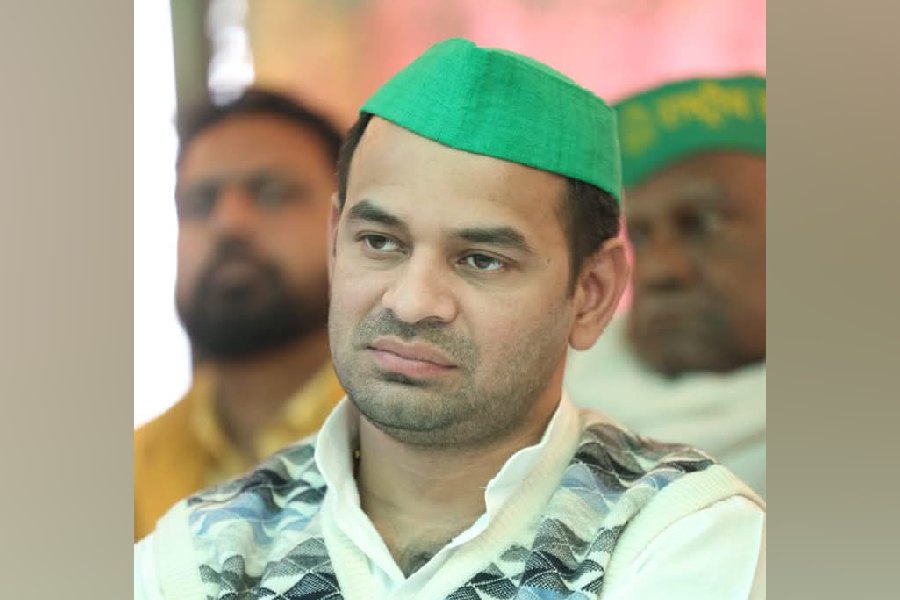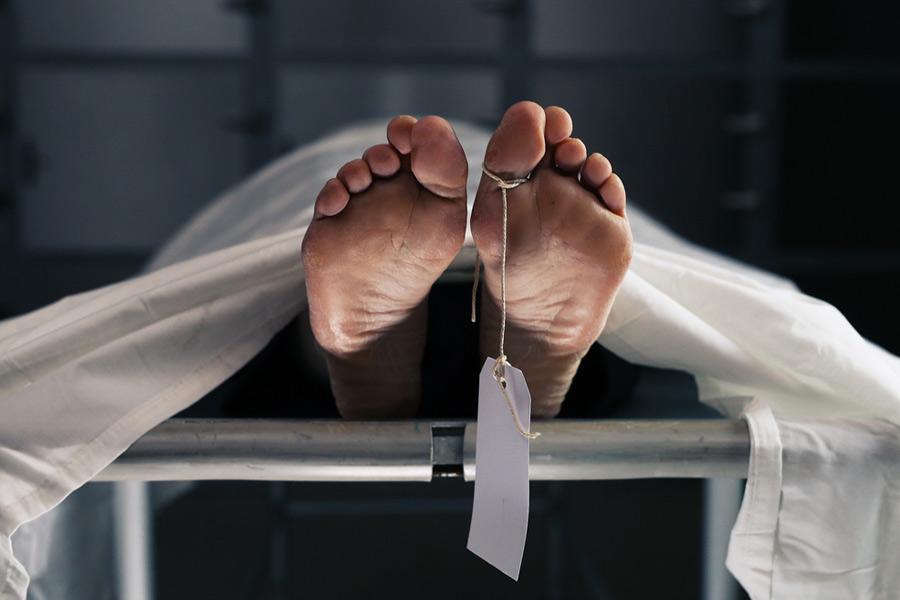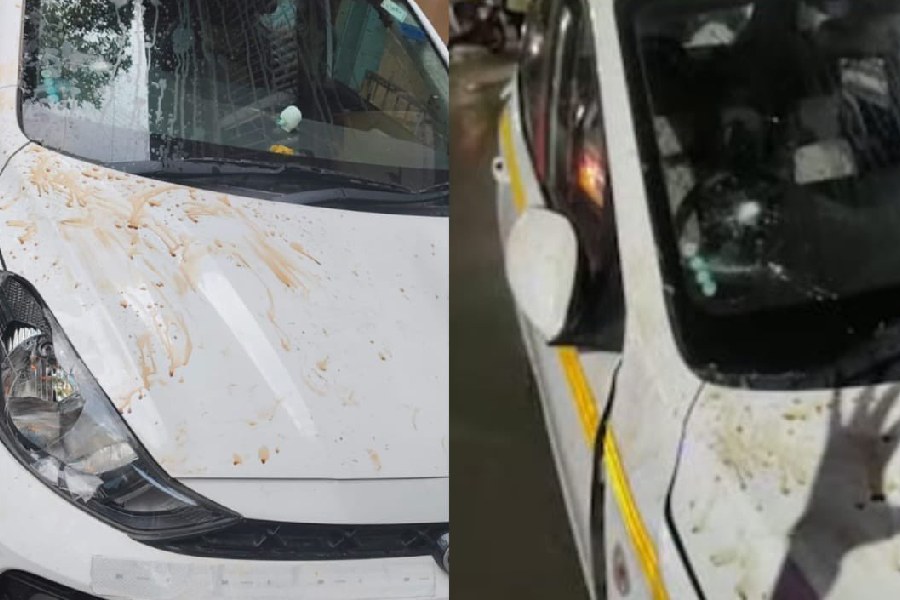 |
| Abani Bhusan, who is also a painter, shows one of his creations at the exhibition in Jamshedpur on Saturday. Picture by Bhola Prasad |
Jamshedpur, Feb. 11:Four years ago, Jyoti Tanna (36) of Gumla’s Pilksi village used to go to bed hungry. Married to a private tutor, who coached students for competitive examinations, Jyoti had to sustain her family of four on his meagre earning of Rs 2,000 per month. On a good month the income jumped to Rs 2,500, something that allowed her to feed her two sons properly./p>
Today, thanks to the efforts of Gumla-based NGO Stambh, Jyoti makes a cool Rs 400 per day, has built a pucca house for herself, owns a television set and has brought her husband a motorcycle from her money.
The NGO, which works in various Naxalite hit villages in Gumla block, has conceived traditional Sohrai paintings as a route to bring happiness and prosperity amongst the tribal women.
And now, after signing an agreement with Jharcraft last year, officials of Stambh believe that the paintings by the tribals might soon find a global appeal.
Sources said that the first step in this regard had been taken by chief minister Arjun Munda last year, when he carried and showcased a bunch of 25 Sohrai paintings during his visit to Germany to woo investors.
Speaking to The Telegraph here today, founder director of Stambh Abani Bhusan said that the paintings had already been displayed in national and international exhibitions at various places of the country so far.
“We have displayed the paintings at exhibitions in Goa, Gwalior, Hissar (Haryana), Bangalore, Calcutta and Delhi ever since our tie-up with Jharcraft. Our products have started catching the global eye already and we have had some orders from countries like Germany,” Bhusan, who was in the city to take part in a two-day day exhibition-cum-sale of traditional paintings, called Dharohar. The event is being organised by the Tribal Cultural Society of Tata Steel.
He said that his NGO basically trained the tribal women to make Sohrai paintings and later helped them sell it at local markets primarily. Bhusan added that with an increase in demand they were looking to double the number of trainees now.
“With increasing demand we might be forced to double the number of trainees. Currently, we sell Sohrai paintings that have been etched on canvas, leather or glass framed structures,” said Bhusan.
He added that they also sold Sohrai painting made on clothes for a price range of Rs 5000- Rs 8000 per piece in the market. The leather, canvas and glass paintings on the other hand were more moderately priced at anything between Rs 300 to Rs 1,000 per piece.
The tribals only use colours prepared by natural pigments mixed in mud and diluted with water for their works.
The common ingredients used to produce the colours were vermilion (red), leaf paste (green of various shades), black soil (black), brown soil (brown) and limestone (white).










